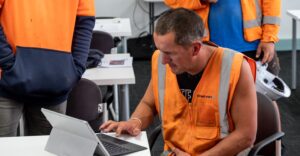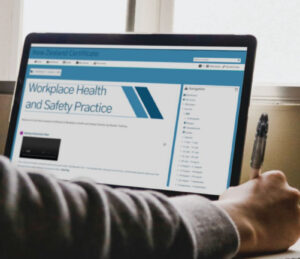Online health and safety training reduces time offsite by up to 1.5 days
By Jason Braithwaite, General Manager BeSafe Training Ltd
Perhaps the labour shortages are giving you a headache because you’re struggling to find the time to spare to send your people to health and safety training. But did you know that blend of digital and vastly reduced classroom learning could save you money and time while keeping your people safer?By Jason Braithwaite, General Manager BeSafe Training Ltd
Most business will be aware of their duties under the Health and Safety at Work Act 2015 to provide information, training, instruction, or supervision to protect all persons from risks within the workplace. Putting this off makes staff vulnerable and puts the business at risk of WorkSafe taking action to make the workplace safe.
Weekend training is not the answer
There isn’t the capacity to send people offsite for long periods at a time. It is now increasingly common for clients to request weekend training, but it is counterproductive when staff have already worked a 40 or 60 hour week. It is also not a good idea because it takes away family and resting time, and people come into the classroom with the wrong attitude because they resent using up their weekends.
Understandably it’s happening because you don’t want to take staff out of operations for two, three or four days as this makes you short-staffed and that, in itself, is hazardous. It’s a rock and a hard place.
Some employers are deferring training they are legally required to do or required to have in place within the terms of their contract. As a result, one company we know of was recently shut down at the cost of tens of thousands of dollars a day for several weeks.
It’s a problem digital learning can help solve, but some employers are resistant.
The Covid-19 pandemic lockdown – past and present – is helping overcome the lack of trust some have in digital learning, mainly since a blend of online and classroom can reduce time spent offsite from two days to just four hours.
We understand that many employers have concerns around how effective the health and safety training will be when an employee – some of whom may have literacy challenges – is left to learn independently of a classroom setting.
Apart from being better than nothing, digital learning is more effective because learners cannot lean on others in the class. They learn as individuals and are assessed as individuals. There is always a tutor available via email or on the other end of the phone.
I would urge employers to embrace digital learning for health and safety because it helps keep staff and the business safer and improves productivity and profits.
A blend of digital and classroom learning can be done over time, particularly if an employer schedules an hour a day, on a roster basis, for staff to do digital learning. On rainy days, employees can get online instead of hanging around and still keep their weekends free.
The current Covid-19 lockdown will only add to the time pressure by putting you under the pump, creating more significant staff risks and putting the business in danger of non-compliance.
Keeping your workers safer, (more) aware and productive onsite is a delicate balancing act, but it can be done by taking action on the following steps:”
-
Conduct a training needs analysis
Do a training needs analysis to identify significant risks and gaps in health and safety training and compliance.
-
Set aside time and facilities
All employers need to do is set aside a dedicated space and some computers to get started.
You could have a group of staff sit down together for a toolbox session and group discussion. Put it on the roster. They will have completed the theory component in just an hour or so a day over eight days, and practical offsite training should only take them out for four or so hours.
-
Appoint an internal person as a support
An internal support person or programme leader, along with your training provider’s tutor, will achieve significantly enhanced learning outcomes compared to onsite classroom learning at a training facility.
The eLearning material is the same as the classroom resource. It is less disruptive, and that will become even more important as the current Covid-19 lock time puts construction companies and manufacturers under increased pressure, particularly as the busiest time of year – the summer season – approaches.













